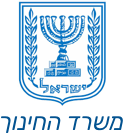The Genius Rabbi Shlomo Zev Zweigenhaft Z”L

Rabbi Shlomo Zev Zwiegenhaft z”l, the son-in-law of the Genius of Sosnowiec, served prewar as the head shochet (ritual slaughterer) in many communities all over Poland.
His father, like his grandfather and his great-grandfather, served for generations as shochets who received the slaughtering tradition from generation to generation, and the righteous of the generations strove to eat from the animals that they slaughtered.
Rabbi Shlomo Zev was born in the city of Sosnowiec in the year 5676 (1915) to his father, the genius Rabbi Moshe Chaim, a student of the Avnei Nezer rabbi.
As a child, he was orphaned of his father and grew up in the home of his grandfather, Rabbi Ephraim Mordechai Motel Zweigenhaft, a shochet, religious judge and a halachic (Jewish law) decisor in Sosnowiec. His family was related to the Taz rabbi (Rabbi David HaLevi Segal).
As a child he studied at Keter Torah cheder (school) of Radomsk chasidism. At the age of 12, he was accepted to be a student of Rabbi Dov Berish Einhorn at the Amstov yeshiva. When he was still 14 years old, he was accepted to be a student of Rabbi David Moshe Rabinowitz (about whom we wrote previously) at the Radomsk Kibbutz Gevoha yeshiva in Sosnowiec. After a period in Kibbutz Gevoha, he learned Torah from genius of Koziegłowy, Rabbi Aryeh Zvi Fromer, and was certified by him to teach too.
Already when he was a young man, he was certified by the great men of the generation, include the genius of Chebin (Trzebinia) to become a shochet.
His quickly became known as an expert shochet, and in several important and famous cities, he was known as the “head of the shochets.” He was later appointed to serve as the head of the shochets in Sosnowiec, and when the great men of the generation established the “Slaughter Committee of the State of Poland and Lithuania” Rabbi Zweigenhaft headed it.
According to writings, the committee was in charge of about 3,500 shohets throughout Poland and Lithuania.
In 5696 (1936), when the representatives of the Polish Sejm (parliament) prepared a bill to ban kosher slaughter, Rabbi Zweigenhaft prevailed and under his influence the proposal was softened to a large extent. This was when the members of the government committee asked to inspect the kosher slaughter with their own eyes, and the rabbi himself stood up to demonstrate to them how kosher slaughter is carried out and convinced them that this is the best and most humane method, and the one in which the animal suffers much less.
From Wikipedia: The committee was founded in the mid-30s of the 20th century by the great rabbis of Poland and Lithuania, including Rabbi Chaim Ozer Grodzinsky, Rabbi Avraham Mordechai Alter, Rabbi Shlomo Hanoch Rabinowitz, Rabbi David Borenstein and more.
In order for the committee to be acceptable to all factions of Polish and Lithuanian Jewry, it was agreed upon that the committee would include seven rabbis from different circles. In addition, it was decided when the committee was founded that it would contain an odd number of rabbis so that there would not be a tie in the vote. Immediately upon the establishment of the committee, its seven members agreed to meet regularly in Warsaw.
The Committee’s Role
Many Jewish communities were too small and poor to afford the salary of a knowledgeable rabbi, and the result was a poor level of kashrut in many small villages. Furthermore, as a result of the industrialization process that Europe went through, travel became faster and cheaper. This phenomenon changed the world of slaughter dramatically. Before that, all the meat sold in each town was slaughtered by a butcher chosen by the rabbi of the town, in that specific town, and after industrialization, a new phenomenon of imported meat was created. The committee was created in order to enforce and monitor a high standard of kosher slaughter.
The Dissolution of the Committee
With the Nazi invasion of Poland, kosher slaughter was banned on October 26, 1939, and the committee was disbanded. During the Holocaust, 90 percent of the Jews of Poland and Lithuania were exterminated. The tiny number of survivors almost all emigrated, including Rabbi Shlomo Zev Zweigenhaft, the only one of the rabbis of the committee who survived the war.
At the beginning of the Holocaust, with the publication of the German ban on kosher slaughter, the rabbi literally dedicated his life to the continuation of kosher slaughter for the Jews.
As a result of this act, he was arrested by the Gestapo and was in serious danger, but was finally released thanks to a ransom.
According to evidence (cited in the book Migdal David and in newspapers and magazines cited on Wikipedia), during all the years of the war, the rabbi kept lighter mitzvot the same way that he kept more significant ones, and many found strength and comfort in him.
He made sure to strengthen and help everyone he could, and not only that, but he put on tefillin every day, despite the danger, and many stood in line every day for the privilege of putting on his tefillin.
His wife, Rebbetzin Esther, and their two children were murdered in the Holocaust. May G-d avenge their blood.
Postwar, he served as the rabbi of Bergen-Belsen, and on Elul 12, 1945 (Aug. 21, 1945), he reestablished kosher slaughter for the first time after the war.
And his actions were so:
After liberation, the rabbi visited a museum in the city of Hamburg and in one of the exhibits there was a slaughter knife (“Chlaf”), and the inscription, in German of course, was: “With these knives the Jews used to slaughter our cattle.”
The rabbi lost no time. He immediately contacted the museum’s management and demanded to receive the stolen knife at the site.
With this knife, the rabbi established the first kosher slaughter following liberation
Later, he was appointed to supervise the kashrut of the large kitchens of the survivors in Bergen-Belsen and Celle.
Wikipedia:
The Chief Rabbinate of Great Britain appointed Rabbi Zweigenhaft to be the head of the shochets of the British occupation zone in Germany (northwest Germany). In his role as head of the shochets in Germany, Rabbi Zweigenhaft was a shochet in Bergen-Belsen and the nearby city of Celle, and in many other cities, including Hanover, Hamburg, Luneburg, Herzberg, and Braunschweig. In addition to slaughtering, Rabbi Zweigenhaft was responsible for making all the arrangements with the slaughterhouses and with the local government of each and every city. Rabbi Zweigenhaft chose some people who were fit to be shochets, and began to teach them the laws of slaughter and inspection.
“The Certifying Rabbi” of Bergen-Belsen
On November 7, 1945, the Chief Rabbinate of Great Britain appointed Rabbi Zweigenhaft to be the “certifying rabbi” of Bergen-Belsen, and the two large kitchens in the city of Celle, which provided kosher food to thousands of survivors who lived in the nearby displaced persons camp in Bergen-Belsen, were under his supervision. In addition, Rabbi Zweigenhaft arranged kosher food for all the Jews in the hospitals and prisons located throughout the British zone.
Vaad HaRabanim (Rabbinic Council) of the British Zone of Germany
Rabbi Zweigenhaft was appointed to be one of the rabbis of the “Vaad HaRabanim of the British Zone of Germany” established by Rabbi Yoel Halpern. Each day, when Rabbi Zweigenhaft came to settle matters of slaughter in many cities throughout the British zone that did not have a rabbi, he answered their questions.
Rabbi of the City of Hanover and the Chief Rabbi of Lower Saxony
In January 1946, the Chief Rabbinate of Great Britain appointed Rabbi Chaim Pinchas Lubinsky to serve as the Rabbi of Hanover, and after a while Rabbi Zweigenhaft was appointed as another Rabbi alongside him. In 1949 the British occupation of Germany ended and the community appointed Rabbi Zweigenhaft to be the only rabbi of Hanover, and after a short time he served as the chief rabbi of Hanover and Lower Saxony.
It is said that in dozens of cases he freed Jews from prisons in Germany, and provided assistance to former Exodus passengers.
In the United States
In 1952, Rabbi Zweigenhaft came to the United States, and Rabbi Eliezer Silver invited him to come to the city of Cincinnati to be the head of the shochets of the two slaughterhouses there. Rabbi Zweigenhaft lived there for about a year until the slaughterhouses were closed. He then moved to Brooklyn, New York, and was the “certifying rabbi” of several slaughterhouses in the United States.
Over time, he became known as an expert in matters of slaughter and inspection, and rabbis from different countries invited him for advice. The OU (Orthodox Union) permitted the eating of migratory quail (Coturnix Coturnix) according to the tradition preserved by Rabbi Zweigenhaft.
His Passing
Rabbi Zweigenhaft passed away on Tamuz 26, 5765 (Aug. 2, 2005) in New York and was buried the following day on the Mount of Olives, in Jerusalem.
For more articles in the series 80 Years Since the Murder of the Jews of Sosnowiec, please click here







